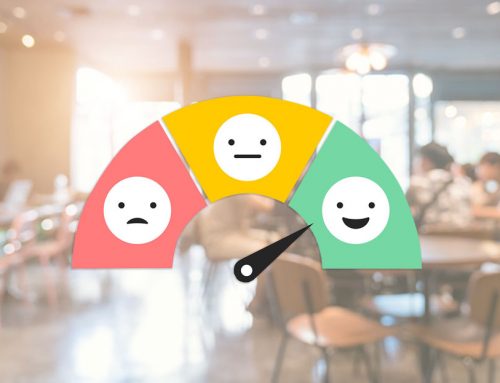We’ve all been there – browsing around your own (or someone else’s) website and suddenly a button that should be clickable, or a page that should be displayed, or an action that should be occurring, just isn’t.
So, what’s happened?
No, it isn’t that hundreds of miniature Oompa Loompas living in your computer have suddenly abandoned their posts, gone on an unexpected strike, and are about to scurry across your desk with little Oompa Loompa picket signs (haha, I entertain myself…).
What’s likely more accurate is that something in the site programming is just having a little trouble completing the task it was originally programmed to do.
It happens.

The trick is knowing where to look to find the resolution.
I cannot stress this enough – building a website is just the first phase of what you want to have as a very long, healthy, and communicative relationship with a great support provider! There are lots of website solutions out there – but how many of them come with a team of Super Heros ready to ensure it keeps doing what it’s supposed to?
A good support team will be familiar enough with all the moving parts of your website so they can diagnose, troubleshoot and move you towards a resolution quickly and efficiently.
Possible Issues
We all just want the things in our life to work out exactly the way they are supposed to at all times. Easy, right? Not too much to ask? Except – when you’re dealing with something like a website, most people don’t realize just how many moving parts are involved:
- The website core programming codes
- The theme and multiple plugins being used on the site itself
- The PHP (or other) coding language being used
- WordPress site core
- The software installed on your host server
- Server firewalls
- SSL certificate validation
- The internet browser you are using and its compatibility with all the site’s moving parts
- And yes, even your internet service provider
And all these moving parts need to play nicely together just to make the little button click over to that new set of bamboo chopsticks you’ve been eyeing on Amazon for about 2 weeks longer than really necessary for an “impulse” item less than $20!
Understanding Your Website
Once you (or one of your site users) encounter an issue, the clock is now ticking to find the resolution. A good support technician will have a checklist of troubleshooting steps to lead them to the source of the issue that will be hardwired into their very core; a great process of elimination to find where the breakdown has occurred, and then be able to move forward with implementing a solution.
Since we deal primarily with WordPress websites (as do 30% of all websites worldwide!), that’s what I’ll focus on here.
WordPress is an amazingly flexible core, with hundreds of thousands of options available online for an unknown total of plugins available to developers all over the world. There’s usually a solution to almost anything, and what requires custom-development can be easily managed by experienced developers and added to your site’s core.
But like most awesome things in life, moderation is key. Like a chef with the perfect recipe, a great developer will know how to maximize use of only the best plugins available to achieve maximum results. Too much, and you’ll open the door to slower websites, load issues, unfamiliar plugin compatibility issues – the list goes on.
We recommend utilizing key plugins – both licensed and custom-built – to give your users everything they need from your site. Nothing more. Nothing less.
But even the best developed websites, with all the perfect ingredients, will inevitably encounter support issues – things that will require your team to put their thinking caps on and get down to business.
Being Website-Proactive
One of the best things you can do for your site, in my humble opinion, is to devise a plan to keep it up to date. Most hosting companies (including us) limit their client’s access to core elements of their WordPress backend, because the wrong click of a button can send things into a very quick downward spiral that takes more time to get out of than they want to pay for.
That’s ok – keeping everything moving smoothly is what you want to pay the professionals for – not fixing those things you’ve broken!
In our company, we schedule at least one annual update for most custom sites. This includes the WordPress core, the site theme, all minor and major plugin updates and any required plugin license renewals. The process involves a few moving pieces of its own:
- Updates are schedule during off-times
- The developer does a full site backup prior to any updates in case we have to revert back
- And then we start with each individual update
- Update WordPress – test the site to ensure it is still running properly
- Update the theme – more testing (this includes checking all web fonts and cross-browser combability testing, speed – all common update concerns)
- Update each individual plugin one at a time (on the typical municipal website, there can be anywhere from 30-40 individual plugins) – followed by (you guessed it) more testing
This once-a-year update is usually enough to make sure that the site is up and running the way that it should be. However, sometimes updates are also needed more often depending on the complexity of your site.
When Good Plugins Go Bad
Every once in a while, we see a great plugin that we use whose developers are working tirelessly to accommodate a security or browser fix that has to be taken into consideration. When this happens, the new versions of these plugins are pushed to the site installs, and we start seeing update alerts.
Sometimes, these small, not-such-a-big-deal updates, can wait. Sometimes they need your attention right away (for example, if your registration calendar suddenly stops working).
When this happens, your support provider will need to run through the update process right away to get things back into working order. Backups, updates, testing, etc. These focus primarily on the plugin having the issue and its compatibility with all the other moving pieces. These updates are unfortunately unexpected, but necessary.
These updates require a developer’s time to diagnose and fix. The more complex your website, the more moving parts, the more often you can expect these types of things to occur. For our municipal clients, I generally like to estimate 2-3 mini updates throughout the year, unless there are big issues that arise.
Protecting Your Investment
For all businesses, it’d be nice to know how much you need to budget each year for your site support, updates and maintenance. This can be tricky with some providers as it is industry standard to bill incidentals (above and beyond standard hosting) at an hourly rate that can range greatly from $100-250/hr.
For our clients, we’ve tried to simplify the issue, and put together our tailored Hosting, Update and Support Packages for the varying levels of community site requirements:
- À La Carte Support
- You pay a small hosting and content management system support fee
- Your annual updates and license fees
- And your by-the-hour incidental fee for any other issues that arise throughout the year
- Or, our All-Inclusive Hosting, Update & Support fee
- This one includes all the hosting, support and updates you will need throughout the year – as often as you need us, and no extra bills!
Not sure which one is right for you? Call or email me today and we can take a look at your site, review your experience with support to date, and I can recommend for you an option that will likely work better – for your site, as well as your bottom line.
(Now… time for me to finally get those chop sticks!)



